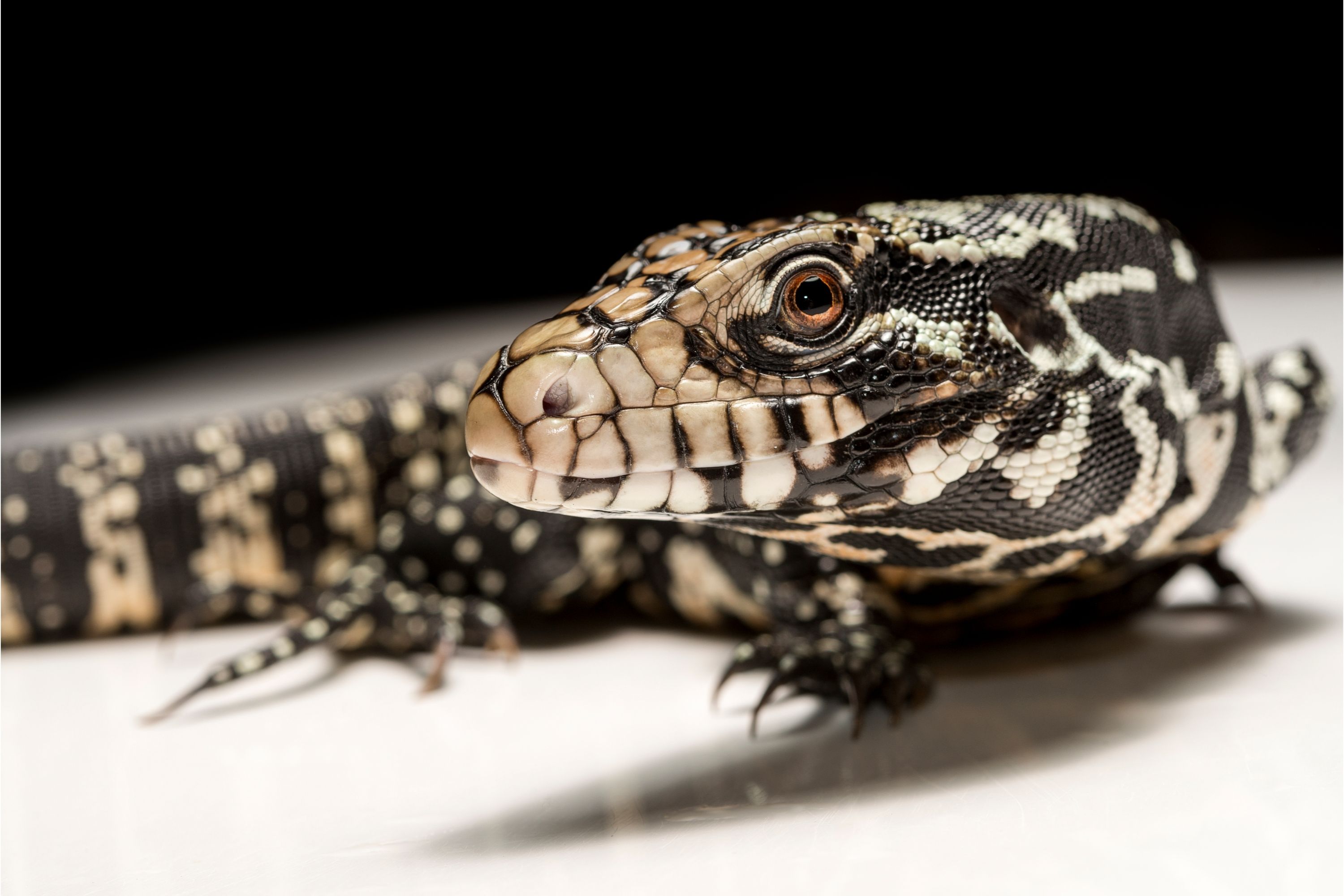Gold tegu
(Salvator merianae)

Description
Tupinambis is a lizard genus which belongs to the family Teiidae and contains eight described species. These large lizards are commonly referred to as tegus (teiús in Portuguese). T. merianae (Argentine black and white tegu), T. rufescens (red tegu), and T. teguixin (gold tegu) are popular in the pet trade. They are primarily found in South America, although T. teguixin also occurs in Panama. In 2012, a number of tegu species were reclassified from Tupinambis to the previously used genus Salvator. The newly proposed classification comes from a restructuring of the family Teiidae based upon the study of 137 morphological characteristics. The new classification is as follows: Salvator duseni (yellow tegu), Salvator rufescens (red tegu), Salvator merianae (Argentine black and white tegu), Tupinambis teguixin (gold tegu), Tupinambis longilineus (Rhondonia tegu), Tupinambis palustris (swamp tegu) and Tupinambis quadrilineatus (four-lined tegu) The Tupinambis species have heterodont dentition consisting of four different types of teeth. Incisor-type—tricuspid—teeth reside at the tip of the mouth. Recurved canine-type teeth occur further back on the tooth row. Behind those reside a separate set of incisor-like teeth (though flattened in a perpendicular plane to the first set of incisors). The rearmost teeth are blunt, rounded, peg-shaped teeth. The rearmost two tooth classes only occur in sexually mature individuals, thus indicating an ontogenetic shift in tooth morphology. Along with changes in tooth type, the frequency of each tooth type also changes with ontogeny, without an overall change in tooth count (approximately 70 teeth). Rather than increase tooth count, the teeth themselves increase in size as the jaw grows from hatchling to adult. This ontogenetic shift in tooth morphology suggests a shift in diet with age; however, few dietary studies have been done to support this claim and limited stomach content observations do not show much variability between hatchlings and juveniles.
Taxonomic tree:







